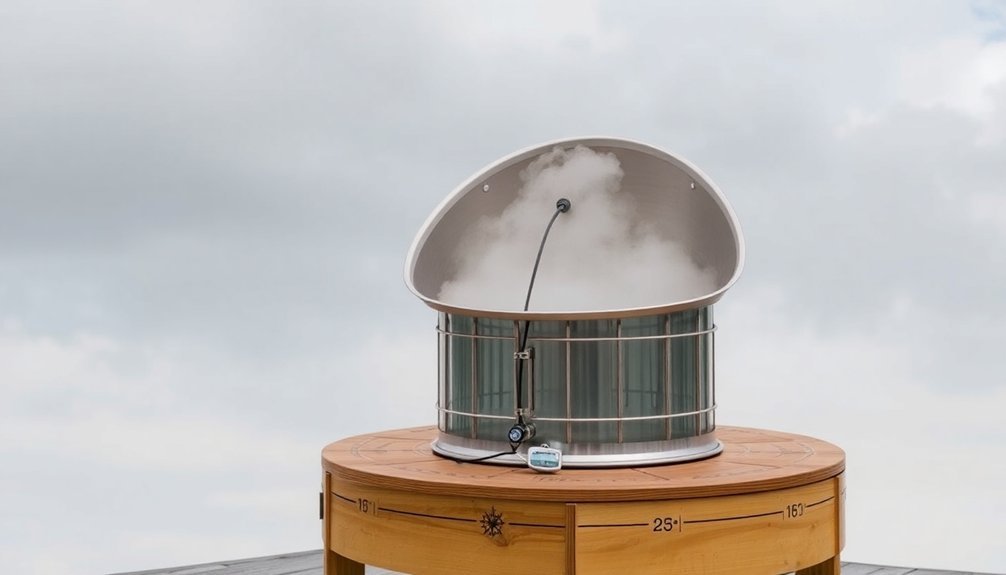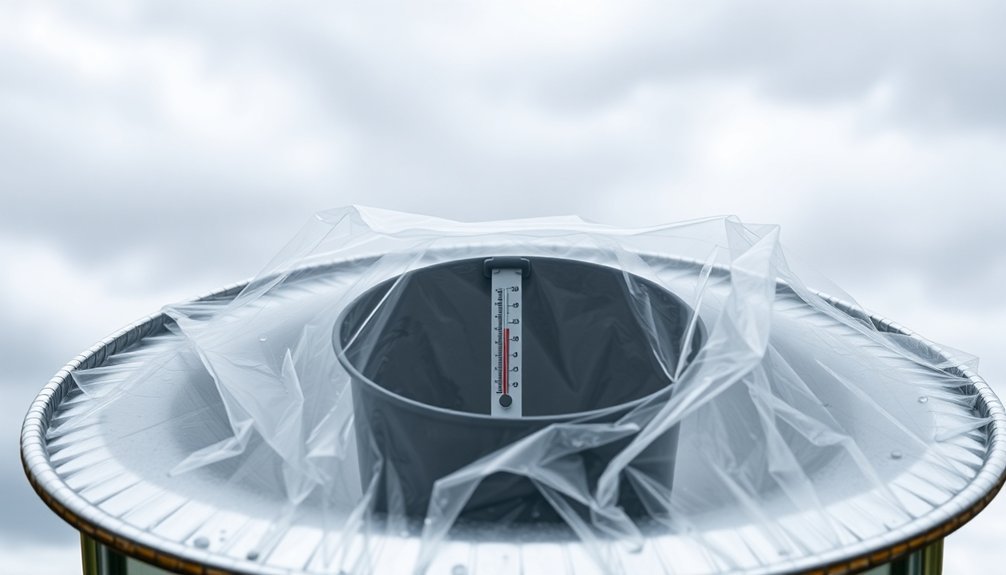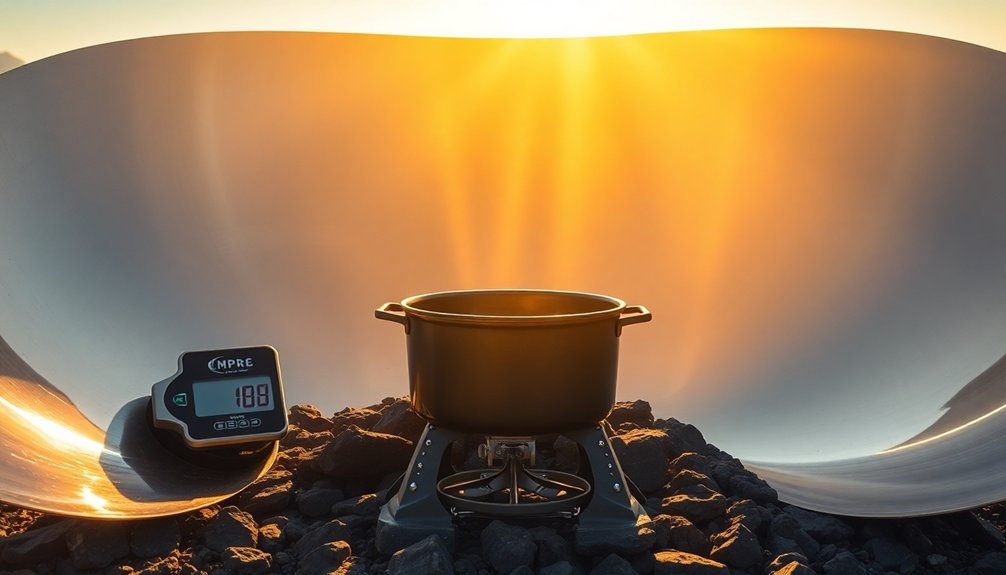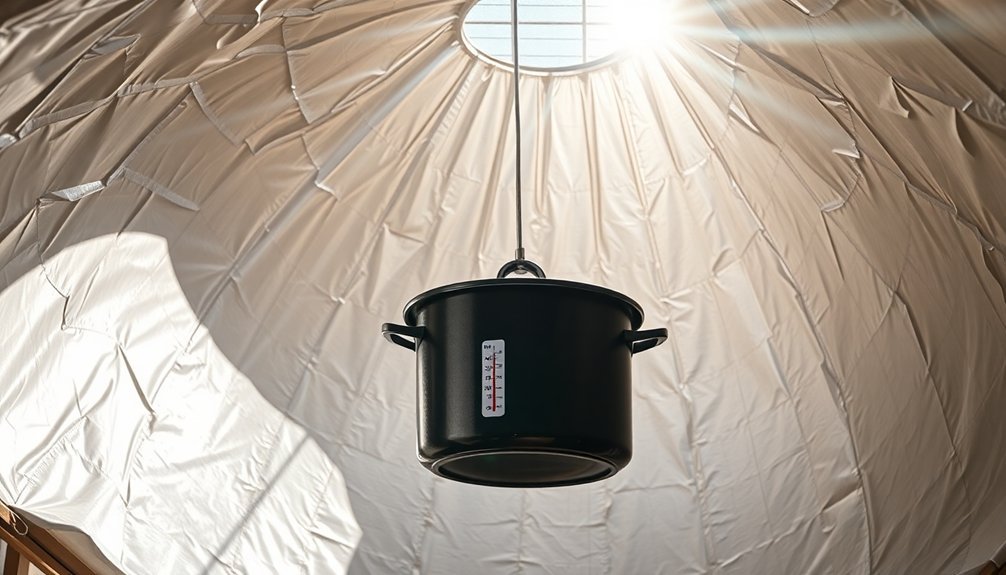To maximize sun cooking on cloudy days, you'll want to master these three proven hacks. First, set up a double reflector system using mirror card or aluminum foil to capture and concentrate even weak sunlight. Second, use dark-colored containers like glass jars or metal pots coated with flat-black paint, and insulate them with wool or newspaper to retain precious heat. Third, track the sun's movement either manually or with an automated platform, adjusting your cooker every 10-20 minutes for best exposure. These techniques work together to help you achieve successful solar cooking even when conditions aren't ideal, and there's much more to discover about each method.
Mastering The Double Reflector Method

When sunlight is scarce, the double reflector method can greatly boost your solar cooking power. You'll need two reflectors: position the top one to catch sunlight and direct it to the opposite side of your cooking target, while the bottom reflector focuses this redirected light onto your food. This setup allows you to achieve 100% cooking efficiency with proper alignment of your reflectors.
To maximize efficiency, use a protractor to set precise angles, adjusting them as the sun moves. Choose reflective materials like mirror card or aluminum foil, and attach them carefully to avoid bubbles.
You'll know you've got it right when you can see the sunlight concentrated on your target area. For best results, create a sturdy base from MDF or plywood to keep your reflectors stable.
Remember to check alignment by placing a bright object in the target area and viewing the setup from the sun's perspective.
Temperature-Retaining Container Tricks
Since cloudy days can interrupt solar cooking, mastering temperature retention becomes essential for successful meal preparation. You'll want to select dark-colored pots made of heat-conducting materials like metal or glass, and position them centrally in your solar oven. For best results, you can darken your containers with non-toxic flat-black paint or soot. Proper trapping of heat through transparent glazing materials helps maintain cooking temperatures even during brief cloud cover.
| Container Type | Heat Retention | Best Uses |
|---|---|---|
| Glass Jars | Excellent | Soups, Stews |
| Metal Pots | Very Good | Rice, Beans |
| Pyrex Dishes | Good | Casseroles |
| Baby Food Jars | Moderate | Small Portions |
When clouds appear, quickly seal your containers and push them close together. Add insulating materials like wool or newspaper around them. You can even move the entire setup indoors to continue cooking with retained heat, keeping lids tightly closed until serving time.
Strategic Sun Tracking Techniques

Effective solar cooking depends heavily on maintaining ideal sun exposure throughout the day.
You'll need to choose between automated or manual tracking methods to maximize your cooker's efficiency. Automated systems will adjust your cooker every 10-20 minutes using solar power or gravity, while manual tracking requires your active involvement but offers more control. Traditional solar cookers can benefit from a wheeled platform design that automatically follows the sun's movement.
- Picture your solar cooker as a sunflower, always turning to face the sun's warmth
- Visualize positioning your cooker slightly ahead of the sun's path, like leading a moving target
- Think of your tracking schedule as a solar dance, moving in harmony with the sky
- Imagine your cooker as a solar satellite, constantly realigning for best exposure
- See your reflectors as light catchers, redirecting every precious ray onto your cooking pot
Frequently Asked Questions
Can I Solar Cook During Winter Months When the Sun Is Weaker?
Yes, you can solar cook in winter! Your cooker needs good insulation and clear skies. You'll want to track the sun carefully, use reflectors effectively, and expect longer cooking times when temperatures are cold.
How Do I Prevent Food From Drying Out in a Solar Oven?
Use covered baking dishes to trap moisture, reduce liquid amounts by 1/4 cup, and don't open the lid frequently. You'll want to keep steam inside and rotate your food every 10-15 minutes for even cooking.
What Foods Should Never Be Cooked in a Solar Oven?
You shouldn't cook foods that need frying, grilling, or precise temperature control in a solar oven. Avoid delicate fish, thick meat cuts, stir-fry dishes, and foods requiring high heat or quick cooking times.
Does Altitude Affect Solar Cooking Performance and Timing?
Yes, altitude affects your solar cooking considerably. You'll experience better performance at higher solar altitudes when the sun's more direct. This means faster cooking times between 10 AM and 2 PM for ideal results.
Can I Use Regular Kitchen Pans Instead of Specialized Solar Cookware?
Yes, you can use regular kitchen pans, but black ones work best for solar cooking. They'll absorb heat faster than lighter colors. While specialized cookware is ideal, dark-colored regular pans will get the job done.
In Summary
You've now got the key tools to make sun cooking work even when conditions aren't perfect. By using double reflectors, temperature-retaining containers, and smart sun tracking, you'll be able to harness solar power on partly cloudy days. Don't let a few clouds discourage you – with these techniques, you're ready to cook efficiently and sustainably. Keep practicing these methods, and you'll master cloudy-day solar cooking in no time.





Leave a Reply